Huawei H12-831_V1.0 - HCIP-Datacom-Advanced Routing & Switching Technology V1.0
The figure shows the file information on R2. When a network engineer runs the dir | exclude 1 command to view the file information, which of the following files will be displayed?
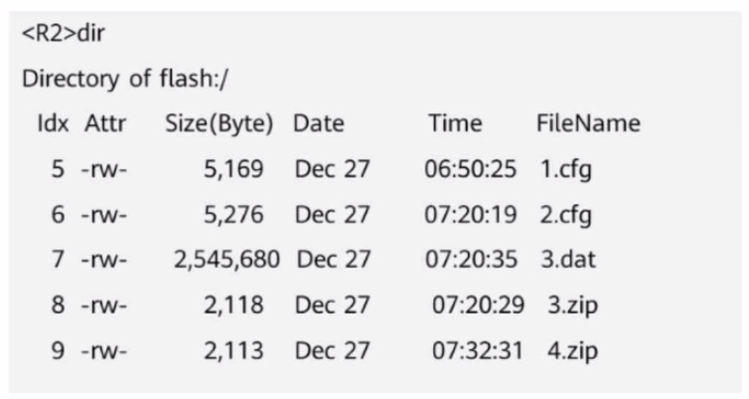
A network engineer checks LLDP neighbor information on R1. The output is shown below.
Which of the following statements are true?
LLDP Output:
yaml
CopyEdit
------------------------------------------------
GE0/0/0 has 1 neighbor(s):
Neighbor index: 1
Chassis type: MAC Address
Chassis ID: faed-ad04-0010
Port ID subtype: Interface Name
Port ID: GE0/0/0
System name: R2
System description: Huawei YunShan OS
Version 1.22.01 (AR8000 V100R002C200)
Copyright (C) 2021-2022 Huawei Technologies Co., Ltd.
HUAWEI AR8140-12G10XG
System capabilities supported: bridge router
System capabilities enabled: bridge router
Management address type: IPv4
Management address: 192.168.1.1
Expired time: 107s
The path that IP packets pass through on an MPLS network is called a label switched path (LSP). An LSP is a bidirectional path that specifies the transmission direction of data flows.
In the figure, the company wants to ensure secure communication between the headquarters and branch, and isolate the R&D areas from non-R&D areas, without changing the current network deployment.
To meet this requirement, an administrator deploys BGP/MPLS IP VPN on the network.
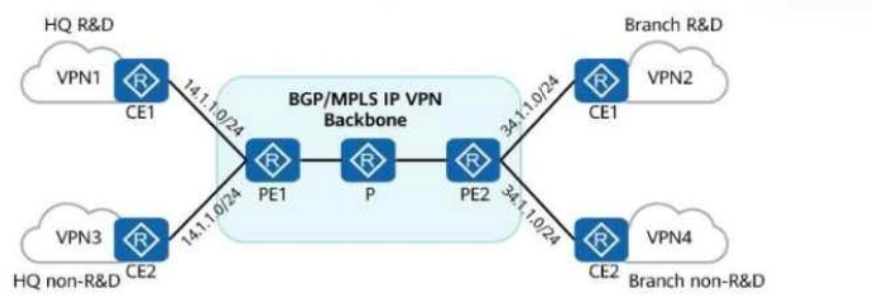
Which of the following statements are true?
On the network shown in the figure, IS-IS IPv6 runs on R2, R6, and R3, and the IPv6 address of Loopback0 on R6 is 2000::6/128. OSPFv3 runs on other links. Area 1 is a stub area, and Area 2 is an NSSA. IS-IS routes are imported to OSPFv3 on R2 and R3. Which of the following statements are true?
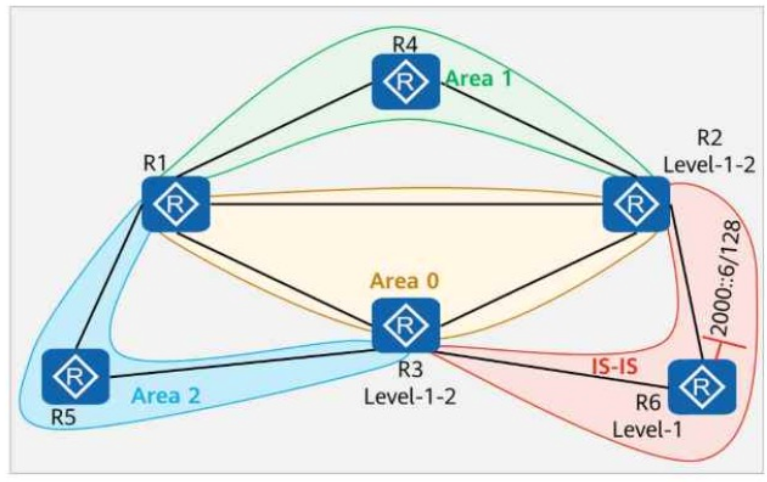
The figure shows the logical network architecture of a migration project. The purpose of the migration is to add network device R4 between R2 and R3.
OSPF runs between network devices.
After the physical network is connected, a network engineer incorrectly imports the backup configuration of R3 to R4 during the migration.
Given this, which of the following statements are true?
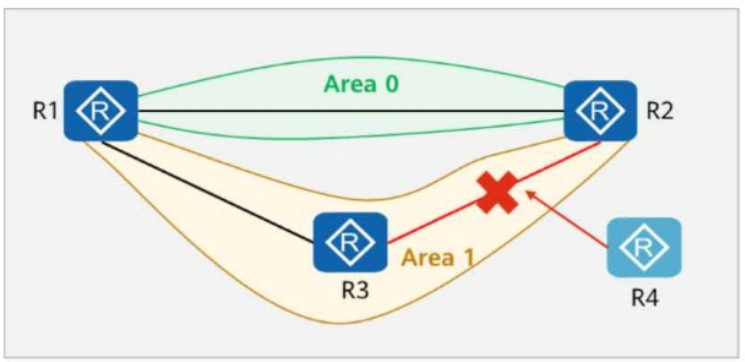
Options:
If technology migration on the network affects the services running on the live network, strictly follow the preset operation process and risk control measures during the implementation of the technology migration project. Generally, this type of project is defined as a migration project. Which of the following operations performed on the live network belongs to a non-migration project?
On the OSPFv3 network shown in the figure, OSPFv3 is enabled on the interfaces connecting R1, R2, and R3. The router ID of each router is 10.0.X.X, where X is the number of the router. If you check detailed information about an LSA on R3, the command output shows that the LSA is generated by R2 and describes the IPv6 prefix address associated with the Router-LSA.
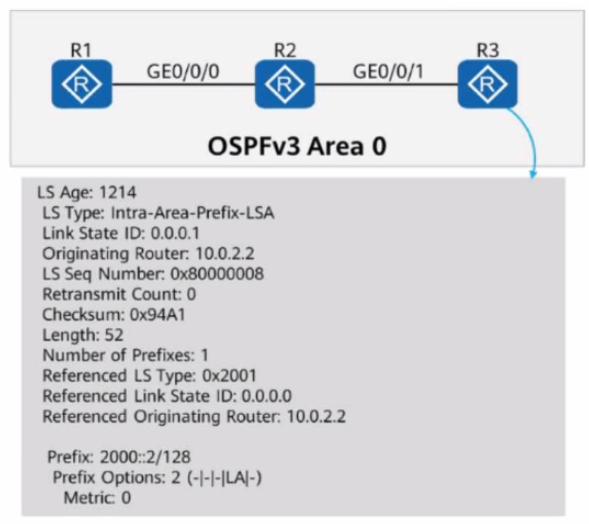
In the figure, packets are forwarded based on MPLS on the network.
When PE2 receives a packet from P2, what is the label value carried in the packet?

Options:
On the network shown in the figure, EBGP peer relationships are established between neighboring routers through directly connected interfaces.
The router ID of each router is 10.0.X.X, and the AS number is 6500X, where X is the number of the router.
Both R1 and R4 have static routes to 192.168.1.0/24, which are imported to BGP through the import-route command.
R1 adds a community attribute (1:1) to the route before advertising it to its peers.
All routers are configured to propagate community attributes.
R3 is configured with a routing policy that rejects routes with the community attribute 1:1.
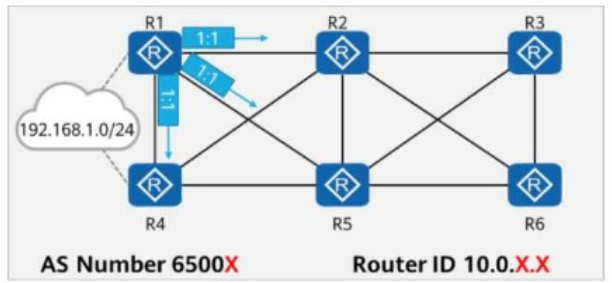
In this case, which of the following is the path for traffic from R3 to 192.168.1.0/24?



